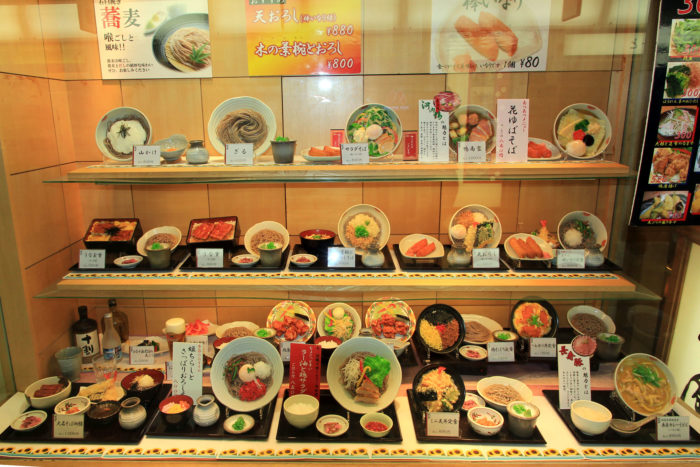
Last Updated: 13 Apr 2021 Top ten expectations of Japanese customers
As foreign firms become increasingly active in the Japanese market, they face many challenges in meeting with Japanese customer service expectations. Firms that sell to Japanese companies in overseas markets, for example the U.S. subsidiary of a Japanese manufacturer will face similar expectations. Customer service is a highly developed art form in Japan, and is based on different concepts of the relationship between the buyer and seller.
This article will explore the top ten expectations of Japanese customers, and strategies for meeting them.
Expectation #1: Stability and Long-Term Commitment
Japanese firms want suppliers they can stick with for the long term. They tend to have long, involved selection processes in order to determine if a supplier is worth working with. (Sometimes it seems that the long selection process is a kind of test to determine if your firm has the necessary patience.)
Part of the selection process will be determining whether your company is sufficiently stable, and is willing to make a long-term commitment to the customer relation. Demonstrate this by hanging in there through the sales process, and not getting irritated at the various steps. Also, if you are at a more established firm, don’t be afraid to boast about your company’s age, or how long you or your colleagues have been with the company. If your firm is a newer one, emphasize your financial stability, the long experience of your founders, and your large and stable client base.
I recently spoke with the owner of a firm in the cotton industry that had been in the family for four generations. He made a point of emphasizing that history to Japanese clients, and they were always duly impressed. A firm in the automotive industry, while not boasting that kind of long history, makes points in its presentations for Japanese by prominently featuring its lengthy client list.
Expectation #2: Good Track Record
One of the hallmarks of Japanese culture is aversion to risk. In order to win a new Japanese customer, you need to prove that you are not a risky choice for them. This requires showing how you have been a good choice for other customers. Show off your customer list and any awards you have received from them, as well as your ISO ratings and other quality certifications.
In particular, if you have worked with other Japanese companies, especially well-known ones, be sure to play this up. Recently, one of my colleagues had the opportunity to attend a presentation being made to a Japanese auto parts supplier by another service provider that was hoping to do business with them. It turns out that the service provider is currently doing an extensive project with Toyota, one of the parts suppliers’ major customers. But instead of featuring this fact front and center, it was mentioned as an afterthought at the end. By not making this a more prominent part of the presentation, the service provider missed a golden opportunity to grab their attention and burnish its credentials.
Expectation #3: Assigned Contact Person
When working with Japanese customers, it is important to assign a main contact person for the account. All communication with the customer should flow through this person to ensure coordination and consistency. This will prevent conflicting messages from different departments.
I recently spoke with the Director of Asian Investment of a Midwestern state that has been quite successful in luring Japanese manufacturers, and he said that he gives similar advice to cities that have a new Japanese-owned plant come into their community. He finds that communities that assign a designated contact person to deal with the company and any issues it may have are able to have more success in the relationship.
Unnecessary changes in the contact person should be avoided. Many Japanese appreciate the sense of stability that comes from working with the same person continuously over a long period of time. I know several firms that have designated one person to work with all Japanese customers, which works well by insuring the stability of relationship and also that individual gains deep knowledge of what works when working with Japanese.
Expectation #4: High Quality
It naturally goes without saying that Japanese expect the highest quality. It’s important to remember, however, that this applies not only to your product, but to everything you do, including your written communication and personal interactions.
Check and double-check to avoid any mistakes or quality problems. Everything given to the customer should have a perfect appearance
For Japanese, quality also extends to how one reacts to input and feedback. I recently heard an interesting story of how one company failed to respond to feedback in a way that was deemed sufficient by Japanese, with serious consequences. An American parts company was being considered for a major contract with a Japanese auto manufacturer’s U.S. subsidiary. On their first visit to inspect the parts company’s plant, the auto manufacturer’s representatives noticed a broken window in the men’s bathroom. They brought it to the attention of the company. Then, on their second visit some weeks later, they noticed that the window had still not been fixed. They found it so appalling that the company had not reacted speedily to fix a problem that had been pointed out to them, that they immediately dropped them from consideration as a supplier. If they couldn’t get around to fixing something that impacted employee comfort and safety, not to mention energy efficiency, how could they be expected to respond to the inevitable requests that would be part of a Japanese-style customer-supplier relationship?
Expectation #5: Accessibility
Let Japanese customers know how they can contact you if there’s a problem or they have a question at an unusual hour. In Japan, it’s typical to print cell phone numbers and home phone numbers on business cards. It may not be necessary to go that far, but it’s important to have an emergency contact designated. Just relying on one contact method is not sufficient. Recently, my firm’s internet service provider had a problem and I was without email access for 24 hours. A contact who I had just recently been in touch with, and who did not have my phone number, went into a tizzy when their email did not get through to me – an unfortunate situation that could have been avoided if I had shared multiple contact methods at the start of our interaction.
Expectation #6: Quick, Positive Response
It is important to acknowledge every phone call, email, and fax from a Japanese customer as soon as possible — you should always try to reply that same day if possible.
If you aren’t able to provide the information requested right away, just let them know that you received their inquiry and let them know when you plan to get back to them “I’m working on it” is better than not saying anything
There is also an expectation that the response to any inquiry, no matter how unusual, will be a positive one, indicating a willingness to try. Saying “no” reflexively to unusual or complicated requests is not a recommended practice.
One company learned this the hard way when they almost lost their account with an important Japanese customer. Someone from the customer had called an engineer at the company with a special request for a custom product. The engineer quickly responded “that’s not the kind of thing we do.” The phone call ended quickly after that.
Soon after, word reached the upper echelons of the company about how unhappy the customer was about the curt and unhelpful response. The customer realized that their request was unusual, but they had asked based on their good relationship and belief in the firm’s abilities. A visit from a senior person to the customer, and a confab among all the engineers to brainstorm a way to meet the client’s needs, were able to salvage the situation.
Expectation #7: Keeping Commitments
In Japanese business culture, deadlines and delivery dates are taken literally. Deadlines should not just be viewed as desirable guidelines – they should be viewed as strict drop-dead dates. Your customer is likely planning an entire schedule around the receipt of their order from you — being late can result in a severe inconvenience
Be careful about off-hand comments about when something will be done, because you will be held to it. When asked to give a delivery date, don’t be overly optimistic – instead give a date you are sure that you will be able to meet no matter what happens.
One supplier to a Japanese firm learned about this the hard way. A supervisor had given what they thought was a casual estimate of delivery time to the client, and on the appointed day received a panicked phone call wondering where the delivery was – they had taken the date literally, as a firm promise of when they would receive the goods. Meanwhile the company didn’t even realize that they had made a commitment to the customer, and the order was nowhere near ready. Needless to say, the customer was not pleased.
Expectation #8: Thorough and Complete Follow-Up
In Japanese eyes, the relationship begins with the sale. Post-sale follow-up is important to ensure that your customer is satisfied with the product or service they received. Beware of the common U.S. practice of the salesperson disappearing after the sale and handing things off to “customer service.”
Don’t forget that follow-up conversations are also a good way to spot opportunities for add-on sales. Japanese have even coined an “English” word for this post-sale activity: “after-care.” In Japan, companies typically create a schedule for post-sale visits that is mandatory for their salespeople. Creating similar traditions can be helpful. For example, one law firm that services Japanese clients in the U.S. makes a point of following the Japanese tradition of courtesy calls at the New Year. Their clients are pleased to see them, and the conversations are an opportunity to gauge client satisfaction and their needs during the upcoming year.
Expectation #9: Continuous Improvement Attitude
How you respond when there’s a problem is key to your relationship with a Japanese customer.
Be willing to take responsibility when the customer has experienced an inconvenience. Don’t try to “explain away” the problem by blaming other employees, or other factors outside of your control.
Apologize for any problems and inconveniences that the client has encountered, even if they were not your fault. Also, emphasize your commitment to uncovering the root cause of the problem and making sure that the customer does not experience the same problem again in the future.
Recently I discussed these concepts in a seminar conducted for a firm in the pharmaceutical industry. One of the participants recalled a situation when he was working for a contract research firm conducting clinical studies for a Japanese pharmaceutical manufacturer. In a study using mice, an accident took place in which one of the mice was killed, something quite negative as each mouse is an important source of data for the study. The circumstances were that one of the technicians was cleaning the cages, and one of the mice escaped. While trying to look for the mouse, she accidentally stepped on it and killed it. The reason this happened was that the technician was rather stout, and did not see that the mouse was underfoot.
The participant I spoke with was in charge of communicating this situation to the customer, and was concerned that they might be extremely upset. He wrote a letter which first of all apologized for the unfortunate incident, and then explained the facts of what had happened. He then said “We have taken steps to make sure that this will not happen again. Since this technician is a talented one, we do not want to remove her from the study. Instead, we have instructed her that if a mouse ever escapes in this way again, she is to not move her feet, and is to call to others to come assist her in looking for it.” This approach satisfied the customer, and a rift in the relationship was avoided.
Expectation #10: Relationship-building & Hospitality
Modern technology can sometimes be impersonal. Building communication face-to-face rather than only relying on telephones, faxes, and email is valuable, particularly for Japanese. Whenever possible (as long as it does not inconvenience your customer), try to create opportunities for meeting in person.
This means far more visits than would be typical in American business culture. I experienced this cultural difference first-hand when our firm opened a Branch in Japan five years ago. During the first few months, I had asked our Chief Representative, Misako Onoda, to give me a weekly report on her activities, so that I could get a feel for how she was spending her time. I was surprised to see how often she was visiting clients, even for things that didn’t require a face-to-face meeting, such as delivering a copy master for training materials for an upcoming training session. And in Tokyo, each such visit takes easily an hour or two when one factors in the time on the subway and the time sipping tea.
I decided to give Misako some guidance on this, and suggested that she use an overnight delivery service to get copy masters to clients, in order to improve her efficiency. Her reply surprised me – she was making such “unnecessary” visits on purpose! “Every time I stop by a client, I get to meet someone new, or they bring up something by saying ‘by the way, as long as you’re here’ or ‘seeing you reminds me, I wanted to tell you.’ The more excuses I can find to put my face in front of the client’s, the more information I can get about their needs, and the more opportunities for add-on sales.”
Later I learned that this is a common sales strategy in Japan, and sales people are often required to make regular visits to their customers even if only to say hello. And Japanese culture has built-in opportunities for such visits, such as aisatsu (greetings) when there are personnel changes, or delivery of seasonal gifts in the summer and winter gift periods.
This practice is of course predicated on a very different concept of how one should spend the business day. I once heard of a Japanese company’s U.S. subsidiary, where the Japanese sales manager attempted to apply a similar approach, and required all sales staff to make monthly visits to American customers. The customers ended up complaining that the salespeople were wasting their time with meaningless visits.
From a non-Japanese perspective, the Japanese expectations in this article may seem rather extreme. But these expectations are met by the Japanese suppliers that Japanese firms are used to working with in Japan. It’s a matter of playing the game, or looking bad in comparison and losing business opportunities.
The article originally appeared in Success Stories Japan
For more on success with Japanese customers, ask us about our training on communicating with Japanese customers
Related articles
Cultural differences and customer experience
I was finally able to visit Japan again at the end of 2023, after a four and a half year gap. I was
Oh no, not another -hara! (harassment)
When I saw an article in the Nikkei Business magazine discussing kasuhara (customer harassment) in J
Your Japanese customer wants a window (or a desk), not a receptionist or voicemail
Japanese customers expect to get through to the tantosha or madoguchi, not a reception




